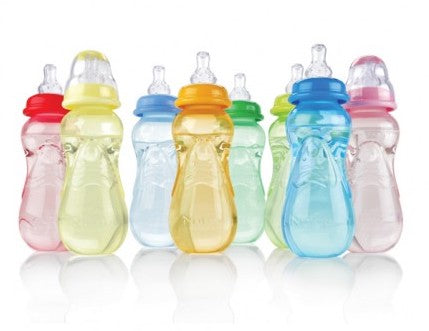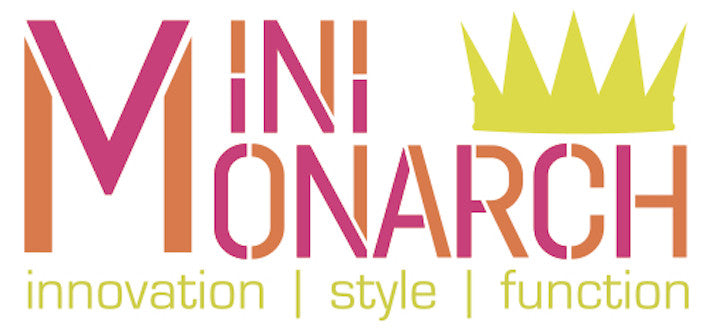November 28, 2016

You only have to take a quick glance around supermarket and store shelves where you will spot a plethora of products marked “BPA Free”. They include baby bottles, water bottles, sippy cups, food storage containers and toys.
Companies advertise BPA-free plastic as a safer version of products. But are they really?
Whilst I don’t want to bore you with the science, it is important that you understand what BPA is and why it was banned.
BPA is an acronym for bisphenol A, and it was once a common chemical used to strengthen plastics. Plastics made from this compound are also used as a liner in almost all cans and bottles because of its ability to inhibit the growth of bacteria, thus extending the safety and shelf-life of our foods and beverages.
Various studies found that BPA is an endocrine disruptor, and it was linked to a number of health concerns, including, but not limited to:
In 2010, after consumer concerns, plastics containing BPA were phased out in Australia and the U.S. Canada, China and Europe soon followed. The fact that the Governments of these countries have taken these steps shows that there is something to be legitimately worried about.
Once BPA was phased out, manufacturers replaced it with blesphinol S and F, known as BPS and BPF respectively.
Now a growing body of scientific, evidence-based studies have shown that BPS and BPF – the common substitutes for BPA – may in fact be as harmful as BPA.

In 2013 Professor Cheryl Watson conducted a study into BPS and its effects at The University of Texas Medical Branch. She states “Manufacturers put ‘BPA free’ on the label, which is true. The thing they neglected to tell you is that what they’ve substituted for BPA has not been tested for the same kinds of problems that BPA has been shown to cause. That’s a little bit sneaky”.
New UCLA-led research demonstrates some of the mechanisms that make BPS just as harmful as BPA. The study found that BPS speeds up embryonic development and disrupts the reproductive system in animals.
“Our study shows that making plastic products with BPA alternatives does not necessarily leave them safer,” said Nancy Wayne, the study’s senior author, a reproductive endocrinologist and Professor of Physiology at the David Geffen School of medicine at UCLA. “Our findings are frightening…”
So not only are BPS and BPF similar in name to BPA, it seems they're also similar in structure and behaviour, which is why they makes a good replacement to BPA.
Sadly, it would appear that plastics manufacturers are have traded one endocrine-disrupting chemical for another.
My purpose is not to cause you alarm, but to present you with some facts so you can make informed decisions when you are shopping.
After all, as Mums all we are trying to do is make the best choices for our family, especially our children.
Since plastics came onto the scene in the 1960’s, it has been known that there is a transfer between plastic containers and its contents, a process known as “leaching”. Heat speeds up this process, so anything that is left out in the sun, or microwaved is more likely to contain BPS (from “BPA-free” containers).
Here are things you can take to limit your family’s exposure to BPS:
Sure, plastic containers and bottles are cheap and convenient. But if it’s at the expense of our children’s health, what is the real cost?

Based on the research evidence outlined above it is clear that plastic “BPA-free” baby bottles may not be safe for your baby. Especially if you are reheating it in the bottle. Unfortunately, the same applies if you are thawing (by heating) refrigerated/frozen breastmilk in plastic storage pouches.
So what are the alternatives I hear you ask. No doubt many people would promptly say glass baby bottles. However, consider that every glass vessel carries with it a shatter risk.
The experiences of Dr Jennifer Hanes, an Emergency plastic surgeon (in the US) may have you re-thinking that glass bottles are suitable for infants and toddlers. Dr Hanes writes:
“In response to the bad-press of BPA, many parents have chosen to forego plastic bottles for their children. Resultantly, many are drinking from glass bottles. How do I know? Because I stitch the faces of these precious angels when their bottle shatters and lacerates their skin. Sometimes, they only have to endure the trauma of stitches to their hands or arms, but all too frequently they are drinking as they trip and fall resulting in glass shards in their faces. It still turns my stomach every time. As I ease their fears and meticulously repair the damage, I listen to the concerns of parents about how big and how permanent these scars will be. The trauma of receiving stitches takes quite an emotional toll on children and parents alike”
Another alternative is silicone baby bottles.

Silicone is the perfect material as it one of the safest available. It is naturally free from nasty chemicals such as BPA (and BPS or F), PVC or Phthalates.
Comotomo is the first and only 100% non-toxic, medical grade (safe in the body) silicone baby bottle on the Australian market.
Silicone is extremely heat resistant so Comotomo bottles and teethers are microwave, dishwasher and sterilizer safe and can be boiled in water.
Unlike conventional plastic baby bottles, Comotomo silicone baby bottles are naturally anti-microbial and hygienic and no bottle brush is required for cleaning. Because when a bottle brush is used to clean plastic bottles it creates tiny scratches in the surface where milk particles can get trapped and form bacteria.
Silicone is also scratch resistant and unlike glass, is shatter proof, making Comotomo highly durable.

Environmental Health Perspectives
National Institute of Environmental Health Sciences
